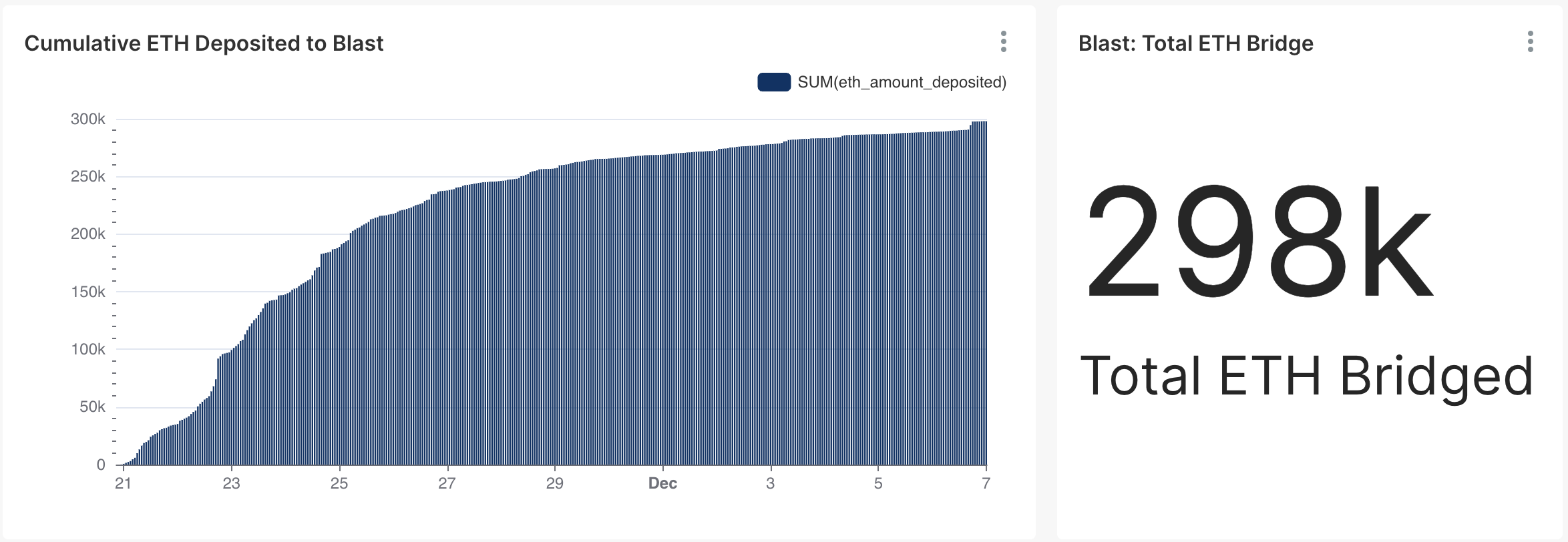Blast, the latest Layer 2 (L2) solution to emerge in the market, has distinguished itself with a novel value proposition. This platform uniquely offers native staking for bridged Ethereum (ETH) and stablecoins. This feature enables users to accrue yield automatically through their participation in the network, a functionality not presently offered by other L2 solutions. Conceptually, Blast can be viewed as an amalgamation of a Liquid Staking Derivative and a Layer 2 platform.
A few things to note - firstly, access to Blast is currently restricted to an invite-only basis. Additionally, the platform employs a one-way bridge, temporarily prohibiting the withdrawal of funds from its ecosystem.
Since the initiation of the bridge contract, there has been a notable influx of assets: approximately 298,000 ETH/stETH have been deposited into the Blast bridge contract.

In terms of stablecoin transactions, the platform has witnessed a transfer of around 92,000,000 stablecoins to Blast.
.png?width=2348&height=800&name=image%20(1).png)
At the time of writing the total amount locked in the Blast Bridge equals roughly $740,000,000 which is just shy of the entire TVL of Solana ($820,000,000).
An analysis of the wallet activity on Blast reveals a significant concentration of deposits among a few participants. The top five addresses depositing ETH constitute nearly 41% of all ETH bridged to the platform. Similarly, the leading depositors of USD account for approximately 16% of all stablecoin deposits, underscoring a concentration in capital distribution.
.png?width=2360&height=804&name=image%20(2).png)
As the Layer 2 landscape continues to evolve and expand, new patterns and value propositions are emerging. However, it is crucial to acknowledge the inherent trade-offs in the cryptocurrency domain. The deposit contract on Blast is managed by a 3-of-5 multi-sig wallet, a common security measure. Moreover, the contract is deployed as a proxy contract, a standard approach for facilitating upgrades, but this also introduces an additional risk vector. For a comprehensive analysis of these risks, Jarrod Watts' detailed thread offers valuable insights.
For those interested in delving deeper into the activities of the Blast bridge, our Jupyter Notebook provides a starting point for exploration.